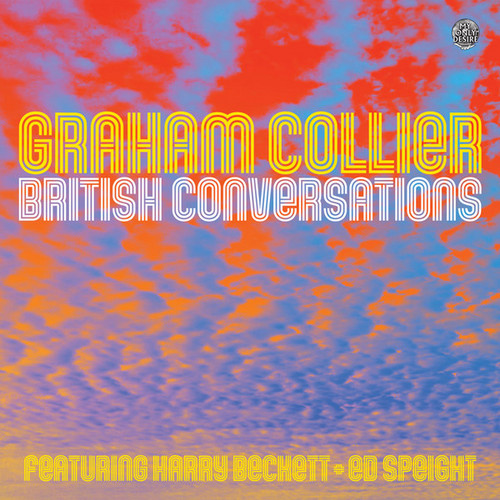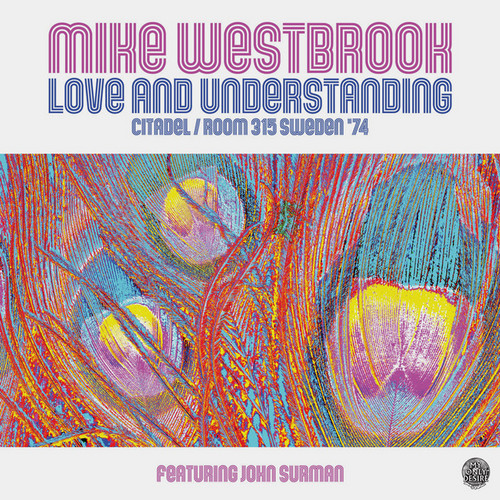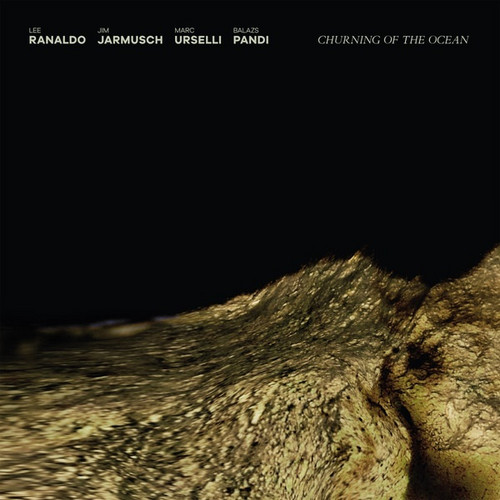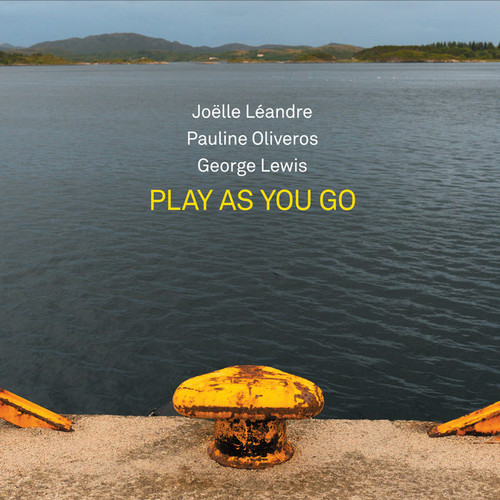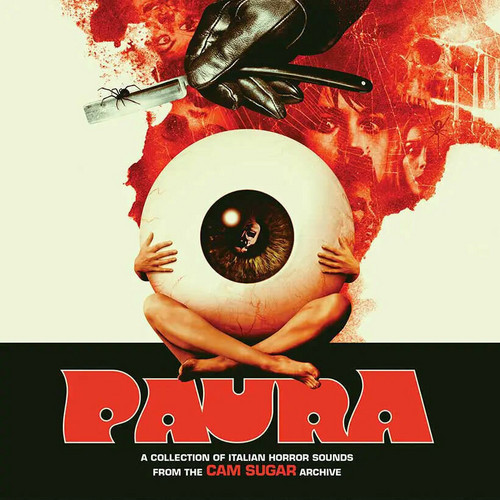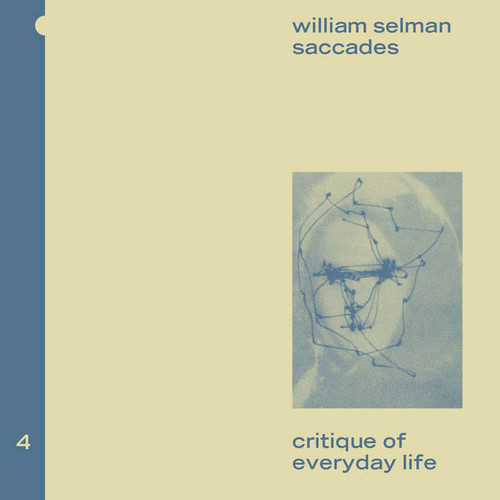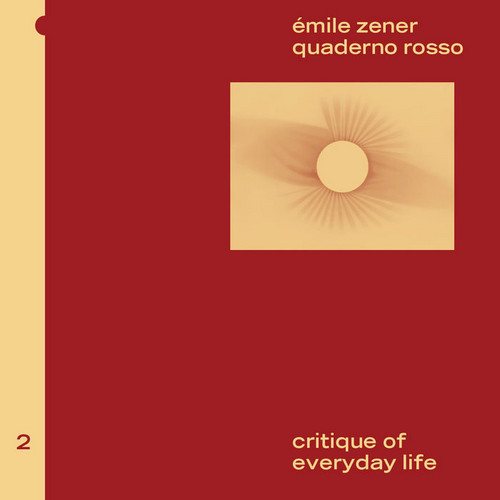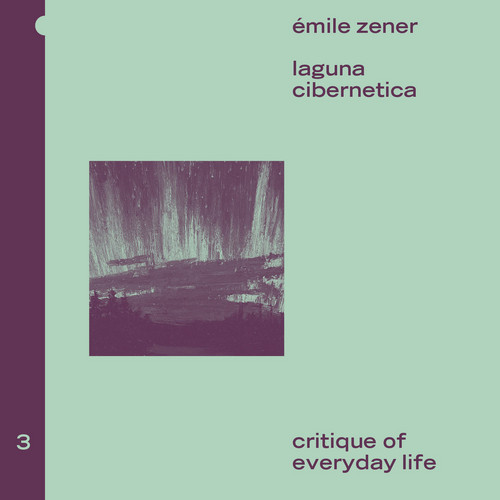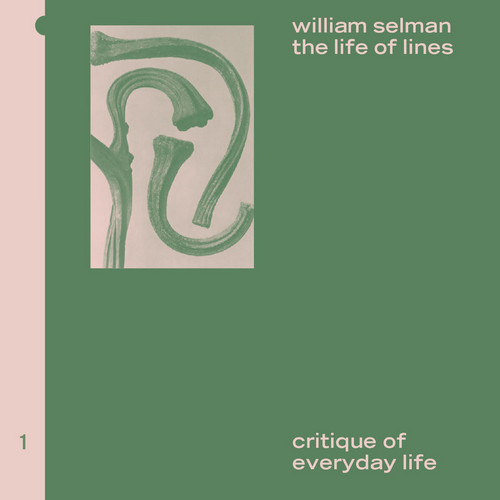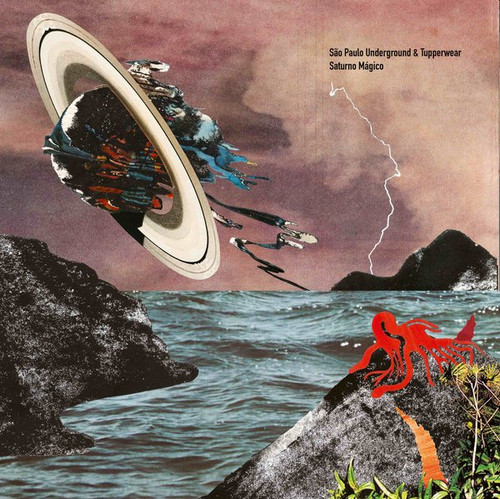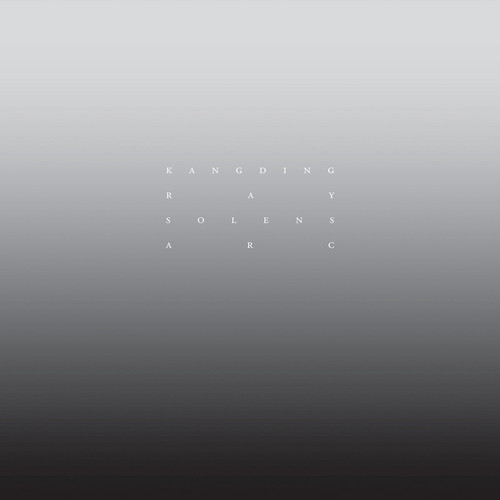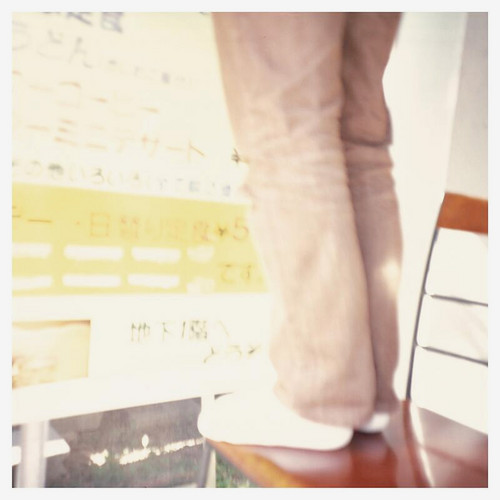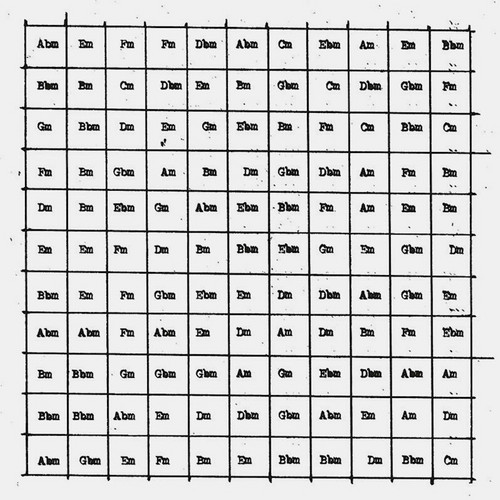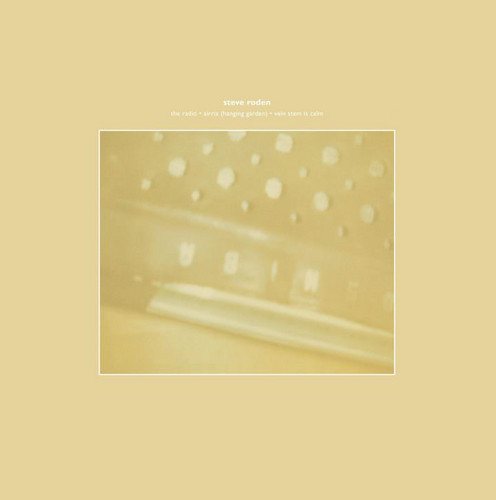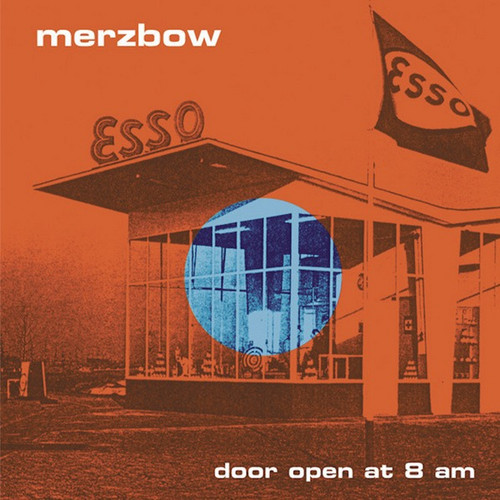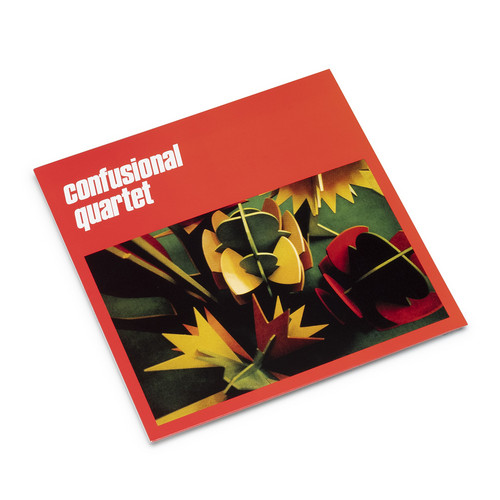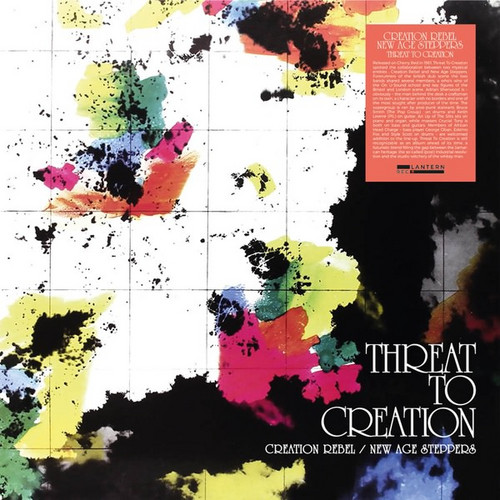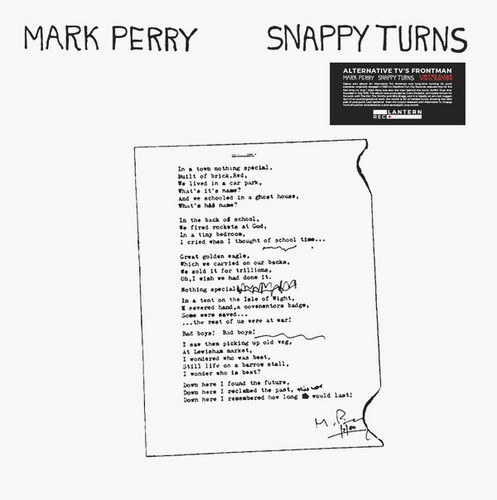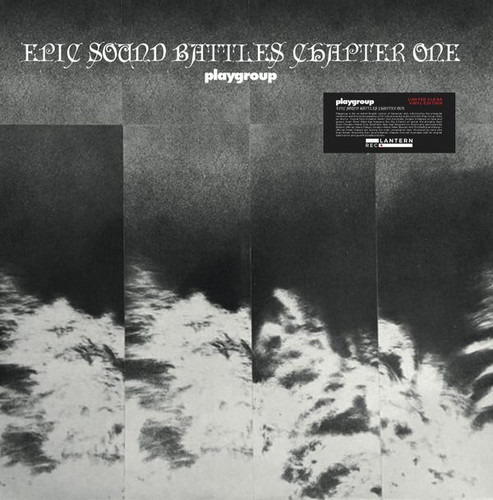Reissues
British Conversations
* CD packaged in 'mini-LP' gatefold sleeve with insert and sleeve notes by Graham Collier biographer Duncan Heining * To commemorate the 10th year since the passing of esteemed British jazz composer, bassist and bandleader Graham Collier, My Only Desire Records presents this 1975 recording of his previously unreleased suite 'British Conversations'.The recording features lead soloists trumpeter Harry Beckett and guitarist Ed Speight, alongside The Swedish Radio Jazz Group - made up of the hottest…
Love And Understanding: Citadel / Room 315 Sweden '74 (LP)
* CD packaged in 'mini-LP' gatefold sleeve with folded insert and additional photos * The debut performance of esteemed pianist/composer Mike Westbrook's cult 70s jazz masterpiece 'Citadel/Room 315', recorded live in 1974. Featured soloists throughout the album are the iconic ECM recording artist John Surman plus a crack team of top Scandi jazzers. Remastered by Caspar @ Gearbox Records from the original master tapes, 'Love and Understanding' is available on limited edition 2LP gatefold vinyl (5…
Churning of the Ocean (LP)
* CD version includes one additional track * Extended instrumental tracks from the nocturnal studio session of director and musician Jim Jarmusch, Sonic Youth's Lee Ranaldo, Balázs Pándi (Keiji Haino, Venetian Snares, Merzbow) and producer Marc Urselli (John Zorn, Mike Patton, Laurie Anderson, a.o). All was recorded live and analog, and in the moment. Mixed, mastered, recorded and produced by Marc Urselli at EastSide Sound Studios, NYC, 2019. Artwork by Italian artist Sara D'Uva. Press quotes f…
Play As You Go
A grand meeting of three luminaries in the fields of improvisation, avantgarde and experimental music -- live recorded by the national Czech radio station, as part of the festival VS. Interpretation 2014 in Prague. Personal notes from Joëlle Léandre and liner notes by Tracy McMullen, 2021. Mastering: Martin Siewert. Artwork: Lasse Marhaug. Personnel: Pauline Oliveros - el. accordion; Joëlle Léandre - contrabass, voice; George Lewis - trombone, laptop electronics.
Paura (2LP)
Killer collection of previously unreleased rare Italian horror sounds from the CAM Sugar archives: a hypnotic, sonic journey into a labyrinth of fear
Saccades
In process of stocking **Edition of 100** Recorded and assembled 2015-2020 by William Selman and mastered by Stephan Mathieu. William Selman’s latest release on his label Critique of Everyday Life co-managed by Chris Miller (aka Gunnar Haslam, Emile Zener) is a slow, sparse unfolding in three parts. Forming a kind of enigmatic triptych that evolves, breathes and retreats over the course of 45 minutes, these arrangements are capable of standing on their own, or working together as a brilliant sum…
Quaderno Rosso
In process of stocking **Edition of 100** Recorded and assembled 2015-2020 by William Selman and mastered by Stephan Mathieu. Inspired by Roland Kayn and the Gruppo d'Improvvisazione Nuova Consonanza, Quaderno Rosso investigates the dialectical relationship between cybernetics and free improvisation using an “action-reaction system of listening” (per Franco Evangelisti) to shape the entangled networks and redirect signal and information flow towards new ends.
Quaderno Rosso is a cybernetic work …
Laguna Cibernetica
In process of stocking **Edition of 100** Recorded and assembled 2015-2020 by William Selman and mastered by Stephan Mathieu. Laguna Cibernetica is a psychogeographical map of the industrial maritime city. It wanders through the streets, stumbling its way through the glass-blowing factories, the office buildings of upper management, the canal-side cafes - all with the inescapable lapping sounds of the lagoon in earshot. It captures the psychic terrain as well as the acoustic - the unease and exp…
The Life Of Lines
In process of stocking **Edition of 100** Recorded and assembled 2015-2020 by William Selman and mastered by Stephan Mathieu. There are lines. Lines move, expand, contract, intersect, diverge. Lines have clear trajectories and unexpected turns. As listeners bound by linear time on a spatial plane of lines, our perception and experience as listeners is lines. William Selman’s inaugural release on his new label Critique of Everyday Life cofounded with Chris Miller (aka Gunnar Haslam) draws on the…
Saturno Magico (LP)
Brazilian-American power trio São Paulo Underground (Rob Mazurek, Mauricio Takara, Guilherme Granado) align their chakras with Tenerife electronic pranksters Tupperwear (Mladen Kurajica, Daniel Garcia) for an anything goes EP session of tropical jazz, Chicago post rock, and general head scratching psych chants. Recorded live in 2016 in a disused kerosene tank in Santa Cruz de Tenerife, Canary Islands after a week-long residency. Now recompiled by the Keroxen label and presented here in its ripes…
Solens Arc (2 LP)
Limited Edition Double Vinyl. Solens Arc wss Kangding Ray’s 4th album on raster-noton, issued in 2014. "Stone thrown, just to watch it fly. a projectile launched for the sole purpose of drawing a ballistic trajectory in the sky. the solens arc is what remains after the subtraction of the goal; a simple parabolic curve defined by gravity, impulse and starting angle. no target to hit, no catharsis to wait for, just the beauty of the flight. solens arc is kangding ray’s fourth album on raster-noton…
Chessa (2 LP)
* Edition of 500 copies, incl. printed inner sleeves, 3 previously unreleased tracks on side d, incl. download* Keplar re-issues the fourth album 'Chessa' by Dan Abrams' project Shuttle358 on vinyl for the first time. The double LP edition includes 3 previously unreleased tracks from the same recording sessions back in 2004, as well as an extended artwork with unseen photographs by Dan Abrams. While undoubtedly associated with the microsound and 'clicks & cuts' movement around the turn of the…
CXXI (LP)
Black Truffle present the latest offering from underground legend Richard Youngs. Hyperactive since the late 1980s, Youngs is widely celebrated for his remarkably extensive and varied body of recordings. His works range freely over a vast terrain, wandering from tender acoustic balladry to raging psychedelic noise and orchestral D-beat, always imbued with his distinctive, often mournful, melodic sensibility and irrepressible sense of joyous experimentation. Comprised of two side-long pieces, CXX…
The Radio - Airria (Hanging Garden) - Vein Stem is Calm
* Limited LP edition * Sonoris is pleased to announce the release both on vinyl and cd, with a new mastering by Giuseppe Ielasi, of some important works from the influential and respected artist Steve Roden. These tracks, which mix conceptual composition and musicality, transcend the ambient or lowercase categories too quickly applied to his music, due to its ghostly beauty. In the tradition of John Cage’s Cartridge Music amplified objects, Steve Roden extracts a fine and delicate music through …
Door Open at 8 A.M.
Much needed repress of Merzbow's 1999 masterpiece, "Door Open at 8 am" remastered by Masami Akita, it includes new artwork created by Masami Akita himself. This limited edition on orange vinyl (200 Worldwide) includes two bonus tracks, a poster with new original art, and a download code.
Confusional Quartet (12")
* Green vinyl, Edition of 400 * 12" album, special edition, originally this was a 10inch, it comes with an entire side of a 1980 concert live in Milan. Out of any classification of musical genre, "Confusional Quartet" is a distillation of the creativity and freedom of expression that in 1977 put Bologna at the center of the international cultural scene. This record places the Confusional Quartet in the history of Italian alternative music Futurism with its dynamic force, youthful spirit, attenti…
Threat to Creation (Lp)
Originally released on Cherry Red in 1981, Threat To Creation spotted the collaboration between two mystical entities: Creation Rebel and New Age Steppers. Forerunners of the British dub scene the two bands shared several members, a who's who of the On U-Sound school and key figures of the Bristol and London scene. Adrian Sherwood is -- obviously -- the man behind the desk a craftsman on its own, a character with no borders and one of the most sought-after producer of the time. The supergroup is…
Snappy Turns (Lp)
Clear 180 gram vinyl. Debut solo album for Alternative TV front man and long-time running UK punk scenester, originally released in 1980 on Deptford Fun City Records. Mark Perry was also the man behind the iconic Sniffin' Glue zine, founded in July 1976. The album was produced by Grant Showbiz, principally known for his work with The Fall, The Smiths and Billy Bragg, and it is literally an art-rock nugget. Sort of an autobiographical work, the record is full of twisted hooks, showing the dark si…
Epic Sound Battle Chapter One (Lp)
Here's a monster of its own. Not to be confused with Trevor Jackson's early 2000 project (even if the British producer has obviously been informed by post-punk, dub, post-industrial and the likes), Playgroup was more than anything a collective, based somewhere around Bristol and London. Drummer Bruce Smith was the key figure behind the project. Neneh Cherry's husband and fabulous motorik force for The Pop Group, The Slits, New Age Steppers, African Head Charge, and -- more recently -- Public Ima…
Stretch (Lp)
Forty years ago, on July 8th and 9th in 1981, a group formed by the splintering of some of Bristol's essential post punk bands, entered the hallowed studio at Berry Street in London to record their debut single. What would emerge was not only an exuberant post funk classic on the A-side, but also a wildly influential dub workout on the flipside, whose reverberations can still be heard today. Both songs have proven essential in very different ways. A focal point for the unique punk-funk that was …
